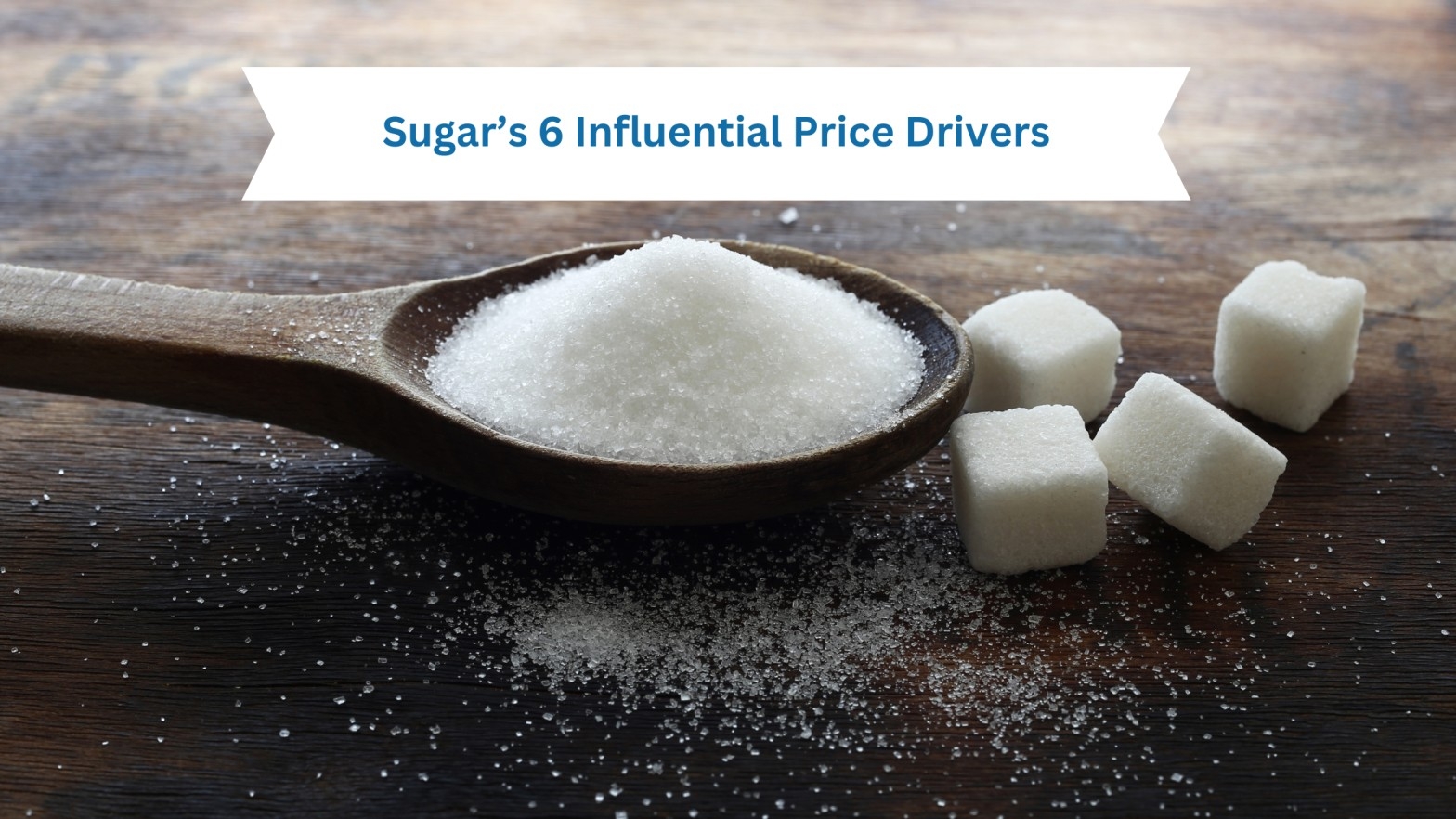Sugar, a ubiquitous ingredient in our kitchens and a vital component of countless processed foods is a complex commodity with a price that fluctuates based on a multitude of factors. Understanding these drivers is crucial for anyone involved in the sugar industry, from farmers and producers to traders and consumers. Here, we delve into the six most influential factors that shape the sugar commodity price, providing valuable insights for navigating the ever-changing sugar market.
1. Supply and Demand Dynamics: The Core Influence
The fundamental principle of economics, supply, and demand, plays a central role in determining commodity prices. On the supply side, factors like weather conditions, crop yields, and government policies in major producing countries like Brazil and India significantly impact the amount of sugar available for purchase. Adverse weather events, such as droughts or floods, can disrupt sugarcane production, leading to price hikes. Conversely, bumper crops can drive prices down due to an overabundance of sugar on the market.
Statistic: According to the International Sugar Organization, global sugar production is expected to reach 180 million tonnes in 2024/25, a slight increase from the previous year.
On the demand side, population growth, economic conditions, and consumer preferences all influence sugar consumption. A growing global population naturally increases sugar demand, putting pressure on prices. Additionally, rising disposable incomes in developing countries can lead to increased sugar consumption in processed foods and beverages, further impacting prices. Conversely, a shift towards healthier eating habits and the growing popularity of sugar substitutes can dampen demand and drive prices down.
2. Government Intervention: A Balancing Act
Governments play a significant role in regulating the sugar market through policies such as production quotas, subsidies, and import/export restrictions. These policies can significantly affect sugar commodity prices. For example, production quotas can restrict supply, driving prices up. Conversely, government subsidies for sugar producers can keep prices artificially low. Additionally, import and export restrictions can disrupt global sugar flows, causing price fluctuations in specific regions.
3. Currency Fluctuations: The Global Market Impact
Sugar is traded globally, and its price is denominated in US dollars. Fluctuations in currency exchange rates can significantly impact the price for buyers and sellers in other countries. A strong US dollar can make it cheaper for countries with weaker currencies to import sugar, potentially pushing prices down. Conversely, a weak US dollar can make it more expensive for these countries to import sugar, leading to price increases.
4. Energy Prices: A Sweet and Sour Relationship
Energy prices, particularly the cost of crude oil, have a surprisingly strong influence on commodity prices. This is because sugarcane can be used to produce ethanol, a biofuel substitute for gasoline. When oil prices are high, it becomes more profitable for producers to divert sugarcane towards ethanol production, potentially reducing the amount of sugar available for the food market and pushing prices up. Conversely, lower oil prices can incentivize producers to focus on sugar production, potentially increasing supply and lowering prices.
Famous Quote: As the renowned sugar trader Emile Gavsie famously stated, "Sugar is more than a commodity; it is a political football." This quote highlights the complex interplay between government intervention and the sugar market.
5. Speculation and Market Sentiment
The financial markets also play a role in determining commodity prices. Speculators, who buy and sell sugar futures contracts based on their price predictions, can influence short-term price movements. If a significant number of speculators anticipate a shortage, they may buy up futures contracts, driving the price up. Conversely, if they anticipate a surplus, they may sell futures contracts, putting downward pressure on the price.
6. Geopolitical Events: Uncertainty Breeds Volatility
Global political events can also significantly impact sugar prices. Political instability in major sugar-producing regions, trade wars between countries, and disruptions to global shipping routes can all lead to price volatility. Additionally, natural disasters like hurricanes or earthquakes can disrupt production and transportation, affecting sugar prices.
Understanding the Sweet Science of Sugar Pricing
By understanding these six drivers, you gain valuable insights into the factors that influence the sugar commodity price. This knowledge empowers you to make informed decisions in the sugar market, whether you're a farmer, a trader, or simply someone curious about the forces shaping the price of this essential commodity.
The Deep Core: Your Trusted Source for Sugar Market Insights
At The Deep Core, we are dedicated to providing comprehensive and insightful information on the sugar market. We offer a wealth of resources, including market reports, analysis, and industry trends, all designed to equip you with the knowledge you need to navigate the dynamic world of sugar.



